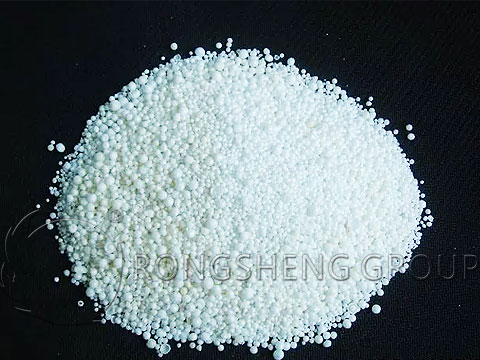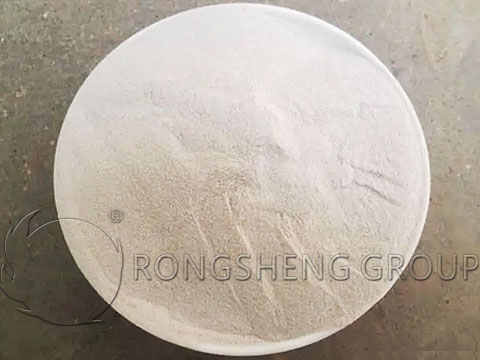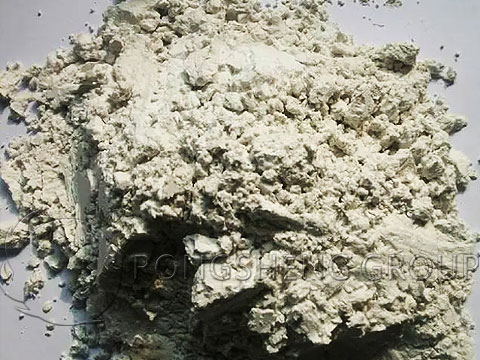The main purpose of heat-insulating refractories made of heat-insulating refractory raw materials is to reduce the heat dissipation of high-temperature kilns, reduce the weight of the kiln body, and reduce the external temperature of the kiln body. Insulation refractories play a vital role in high-temperature kilns and are generally used in conjunction with heavy refractories. Forming a multi-layer composite structure can effectively improve the service life of the kiln, and at the same time save energy and protect the environment.
Thermal Insulation Refractory Raw Materials for Thermal Insulation Refractories
- Hollow ball
Hollow sphere refers to melting alumina or zirconia and other raw materials into a liquid state, blowing the high-temperature molten liquid into small droplets with compressed air, and forming hollow spheres under the action of surface tension and centrifugal force. The common materials are alumina hollow balls, zirconia hollow balls, etc. Hollow balls of these materials are widely used in refractory materials and can be used to produce hollow ball bricks and thermal insulation castables. Because the hollow spheres of these materials have high purity, low impurity content, high strength, and low thermal conductivity. Therefore, it is generally used to produce high-grade thermal insulation materials, which have good high-temperature performance and thermal insulation performance, and can also be in direct contact with flames.

- Floating beads
Floating beads refer to the hollow microspheres of fly ash that can float on the water surface, which are separated from the coal powder ash discharged from the pulverized coal combustion furnace, and are mostly off-white. The chemical composition of floating beads fluctuates greatly, which is closely related to the composition of coal powder. The particle size is usually between 20-250μm, the specific surface area is 3000-3200cm2/g, and the bulk density is generally 250-400kg/m3. Floating beads are generally used in thermal insulation castables, because of their high cylinder compressive strength and low thermal conductivity. Therefore, the purpose of introducing it is mainly to improve the strength of the thermal insulation castable and reduce the thermal conductivity.

- Diatomaceous earth
Diatomaceous earth is a siliceous sedimentary rock of biological origin. The size of a diatom frustule is about 5-400μm, contains a large number of tiny pores, and the porosity reaches more than 80%, so it has excellent heat insulation performance. The bulk density is an important standard to measure the quality of diatomite, the smaller the bulk density, the better the quality. Diatomaceous earth is commonly used in the production of diatomite bricks and has good thermal insulation properties. But the use temperature should not be higher than 900°C, otherwise, the silicon dioxide in the diatomite will be transformed into cristobalite and lose its thermal insulation performance. In addition, diatomaceous earth can also be used as a filler in amorphous materials.

- Perlite
Perlite is acidic lava from a volcanic eruption, which expands at a high temperature of 1180-1350°C to form expanded perlite rich in closed and open pores, and the expansion multiple is more than 7-30 times. The bulk density of expanded perlite is small, generally, between 40-200kg/m3, the thermal conductivity is extremely low, the safe use temperature is below 800°C, and it has certain fire resistance. Therefore, expanded perlite is widely used in thermal insulation refractory materials. It is used in a very large amount in thermal insulation castables, mainly to reduce the thermal conductivity of thermal insulation materials. At the same time, massively expanded perlite can provide a certain strength, and is widely used in the petrochemical industry for kiln and pipeline insulation. In addition, expanded perlite is also used to make some shaped products.
- Ceramsite
Ceramsite is a spherical porous material made of low melting point clay, shale, fly ash or coal gangue as raw materials and calcined. It has a smooth and hard surface, a honeycomb-like interior, low thermal conductivity, and high strength. It is a high-quality artificial lightweight raw material and is mainly used as aggregate in thermal insulation refractory castables.
- Vermiculite
Vermiculite is a typical layered silicate mineral composed of biotite, phlogopite, and other minerals. Its chemical composition fluctuates widely, mainly depending on the composition of the mica. Vermiculite has the characteristics of thermal expansion, which makes it used in the field of refractory materials. When the vermiculite is heated to 200°C, it begins to expand in volume, and the bulk density decreases to 600-900 kg/m3. After complete burning, the bulk density can be reduced to 100-130 kg/m3. The thermal conductivity is also small and has good thermal insulation performance. The maximum service temperature of vermiculite can reach 1100°C, so it can be introduced in the form of granules or fine powder, and it can be made into vermiculite bricks or thermal insulation castables and applied to places with slightly higher temperatures.
Rongsheng kiln refractory manufacturer (https://kilnrefractory.com/) can provide high-quality thermal insulation refractory materials, including various thermal insulation bricks(https://kilnrefractory.com/insulating-fire-brick/), thermal insulation castables, and thermal insulation ceramic fiber products. Contact us for free samples and price information.
